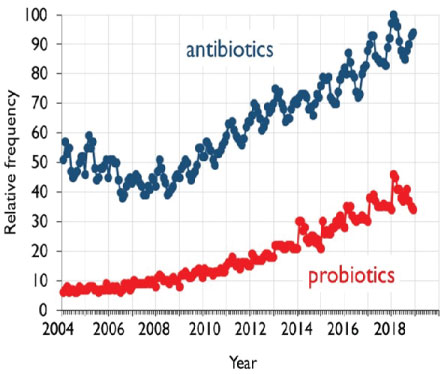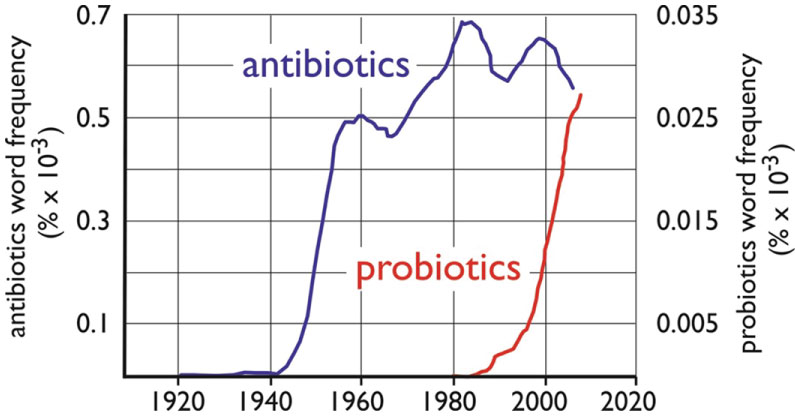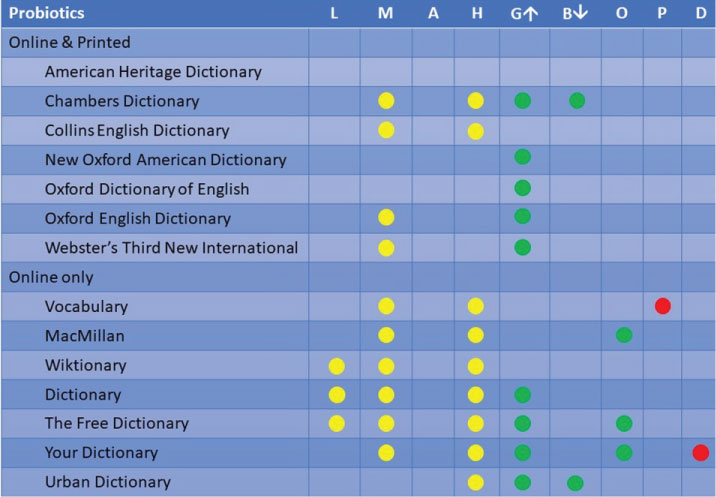When consumers are looking for probiotics, what are they looking for? Probiotics are defined as "live microorganisms which when administered in adequate amounts confer a health benefit on the host". This definition was the end product of an Expert Consultation of a group of international scientists, invited in 2001 by and on behalf of the Food and Agriculture Organization of the United Nations (FAO) and the World Health Organization (WHO) to debate the (then) emerging field of probiotics [1]. Twelve years later, in 2013, an expert panel was convened by the International Scientific Association for Probiotics and Prebiotics to discuss the field of probiotics, and re-view its definition. Apart from a minor grammatical correction as "live microorganisms that when administered etc." the definition was maintained and reconfirmed [2].
The question is whether the definition of probiotics also is relevant and sufficient for the general public to understand what they actually are. In general, the definition of a certain object or phenomenon can be quite difficult to understand. For instance, the definition of a straight line ("the path of shortest distance between two points") is hard to understand without the relevant context (The shortest distance from work to home really never is a straight line). Likewise, the definition of probiotics may be difficult to understand without the relevant (micro)biological context.
When searching for the meaning of "probiotics" in Google, over 68,900,000 results show up in 0.56 seconds (assessed November 29, 2018). An analysis of Google searches for probiotics indicates that since 2004 the relative frequency of this search (as compared to "antibiotics") has increased from 10% to 30% (Figure 1). Probiotics is a relatively new word that first appeared in the general literature around 1980, as compared to the word antibiotics with 40 years longer history (Figure 2). The paradoxical situation is that despite this information overload resulting from a Google search, it is difficult to obtain reliable, unbiased information. Google trend analysis shows that the Number 1 question asked is "What are probiotics". Not too long ago, one turned to a dictionary to search for the meaning of a given word. However, for recent words, and given the long period between release of new editions, printed versions of dictionaries may not be the first choice anymore. Online versions of established (printed) dictionaries can be a more up-to-date alternative, next to "online only" dictionaries. We have analyzed whether the word "probiotics" is included in printed and online available (English) dictionaries, and whether the description matched with the definition of probiotics. For this analysis we have compared the description of "probiotics" with that of "antibiotics".
 Figure 1: Relative frequencies of the use of the words "antibiotics" and "probiotics" in Google searches. Data derived from Google Trends (https://trends.google.com/trends/explore?geo=US&q=probiotics,antibiotics), accessed November 29, 2018. View Figure 1
Figure 1: Relative frequencies of the use of the words "antibiotics" and "probiotics" in Google searches. Data derived from Google Trends (https://trends.google.com/trends/explore?geo=US&q=probiotics,antibiotics), accessed November 29, 2018. View Figure 1
 Figure 2: Frequency of the use of the words "antibiotics" and "probiotics" in general literature. Please note the different Y-axes for antibiotics (left Y-axis) and probiotics (right Y-axis). Data derived from Google Ngrams (https://books.google.com/ngrams), accessed October 29, 2018. View Figure 2
Figure 2: Frequency of the use of the words "antibiotics" and "probiotics" in general literature. Please note the different Y-axes for antibiotics (left Y-axis) and probiotics (right Y-axis). Data derived from Google Ngrams (https://books.google.com/ngrams), accessed October 29, 2018. View Figure 2
The adequacy of the various descriptions of probiotics were analyzed by a matrix derived from the definition of probiotics (Figure 3). On average, the descriptions of the online only dictionaries were more complete than the online versions of printed dictionaries (58% and 29%, respectively, p < 0.05). The characteristic of probiotics that they are live bacteria was never mentioned in the printed versions of dictionaries and occasionally in online dictionaries. The "adequate amounts" part of the definition was never mentioned at all. In case the scope of the health benefit was indicated, this mostly reflected the digestive system and specifically the stimulatory effect on (other) beneficial bacteria. The stimulatory effect of probiotics on the immune system was not mentioned in dictionaries. Inhibition of potential pathogens was only indicated twice. In this context, it should be mentioned that the European Food Safety Authority, in their evaluation of health claim applications for probiotics, do not consider the stimulation of beneficial bacteria to be a health effect [3]. However, EFSA indirectly allowed almost all probiotics by QPS list. Inhibition of potential pathogens is considered to be a (potential) health benefit, if supported by additional evidence [3].
 Figure 3: Analysis of the description of "probiotics" in online versions of printed dictionaries and in online only dictionaries. Yellow dots indicate whether the following components of the definition of probiotics are included in the description: Live (L) microorganisms (M), when administered in an adequate amount (A) have a health benefit on the host (H). Green dots used for functionality of probiotics: stimulation of beneficial bacteria (good; G↑), inhibition of pathogens (bad; B↓) or other health effect (O). Red dots indicate that the description of probiotics is related to plants (P) or doubts are expressed in the description ("presumed", "supposed") (D). View Figure 3
Figure 3: Analysis of the description of "probiotics" in online versions of printed dictionaries and in online only dictionaries. Yellow dots indicate whether the following components of the definition of probiotics are included in the description: Live (L) microorganisms (M), when administered in an adequate amount (A) have a health benefit on the host (H). Green dots used for functionality of probiotics: stimulation of beneficial bacteria (good; G↑), inhibition of pathogens (bad; B↓) or other health effect (O). Red dots indicate that the description of probiotics is related to plants (P) or doubts are expressed in the description ("presumed", "supposed") (D). View Figure 3
With regard to "antibiotics", the description in the online versions of printed dictionaries was slightly (but not significantly) better or (more) complete than online only dictionaries (63% and 49%, respectively, p = 0.47).
In some of the online dictionaries (Vocabulary.com www.vocabulary.com, Wordweb Online www.wordwebonline.com) the description of a probiotic includes the phrase: "often considered to be a plant". This apparently is caused by the misinterpretation of the words "gutflora" and "microflora" (see also Figure 4). In addition, before the word probiotic was introduced to describe bacteria with a beneficial effect, the term had a completely different meaning. The term probiotic, or prebiotic, was used to describe the geological period before there was any form of life on earth [4]. The latter meaning can still be found in older versions of printed dictionaries, such as the 1989 second edition of the Oxford English Dictionary (Supplementary Table 1 and Supplementary Table 2).
 Figure 4: Detail of the painting The Garden of Earthly Delights by Jheronimus Bosch (approximately 1480 - 1505), Museo Prado, Madrid, Spain.
Figure 4: Detail of the painting The Garden of Earthly Delights by Jheronimus Bosch (approximately 1480 - 1505), Museo Prado, Madrid, Spain.
https://commons.wikimedia.org/wiki/File:The_Garden_of_Earthly_Delights_by_Bosch_High_Resolution_2.jpg. View Figure 4
It can be concluded that within online dictionaries, from both online only as well as the online version of a printed dictionary, the term "probiotic" can be found. The descriptions are a mixture of (parts) of the definition and may include functionality and source (dairy products such as yoghurt as well as supplements). A remarkable outcome of our study is that none of the English (online) sources had a completely adequate definition of probiotics. A limited search in non-English, online dictionaries showed that Dictionario Priberam, a Portuguese online dictionary had a complete and correct description of probiotics (https://dicionario.priberam.org/probi%C3%B3tico). In a follow-up study we will investigate how probiotics are d escribed in other languages of the world.
No external funding was used for this study. Costs associated with retrieval and analysis of bibliographic data were covered by University College Roosevelt.
All authors declare no conflicts of interest in this paper.